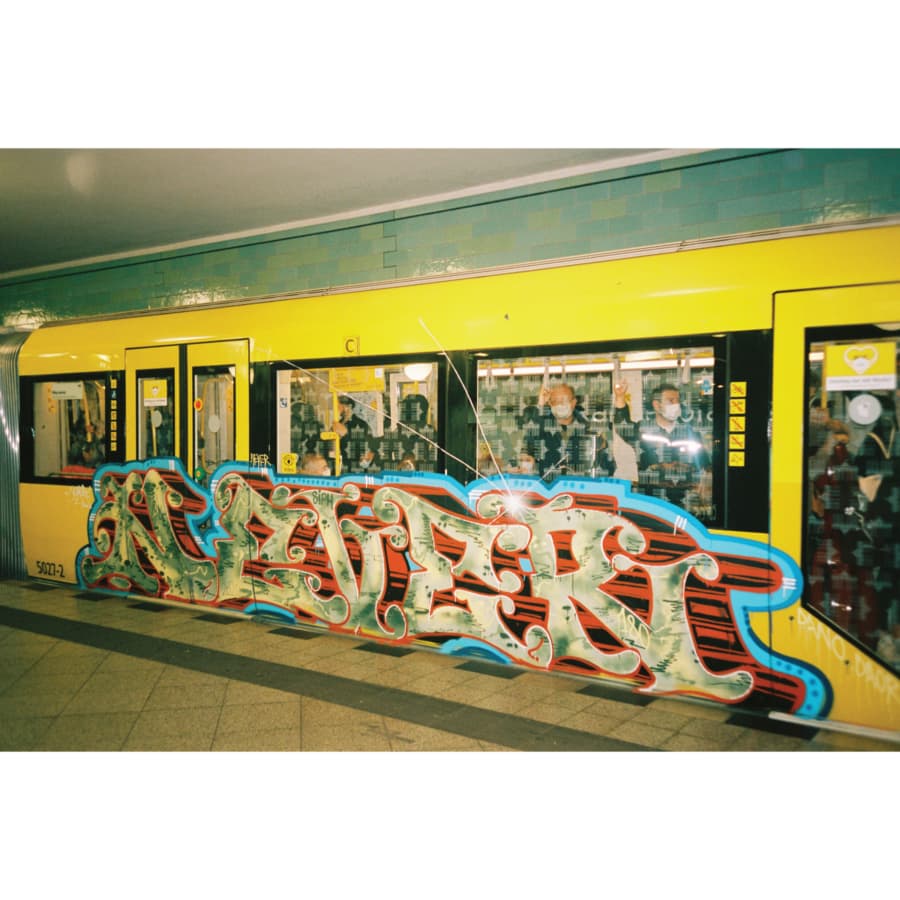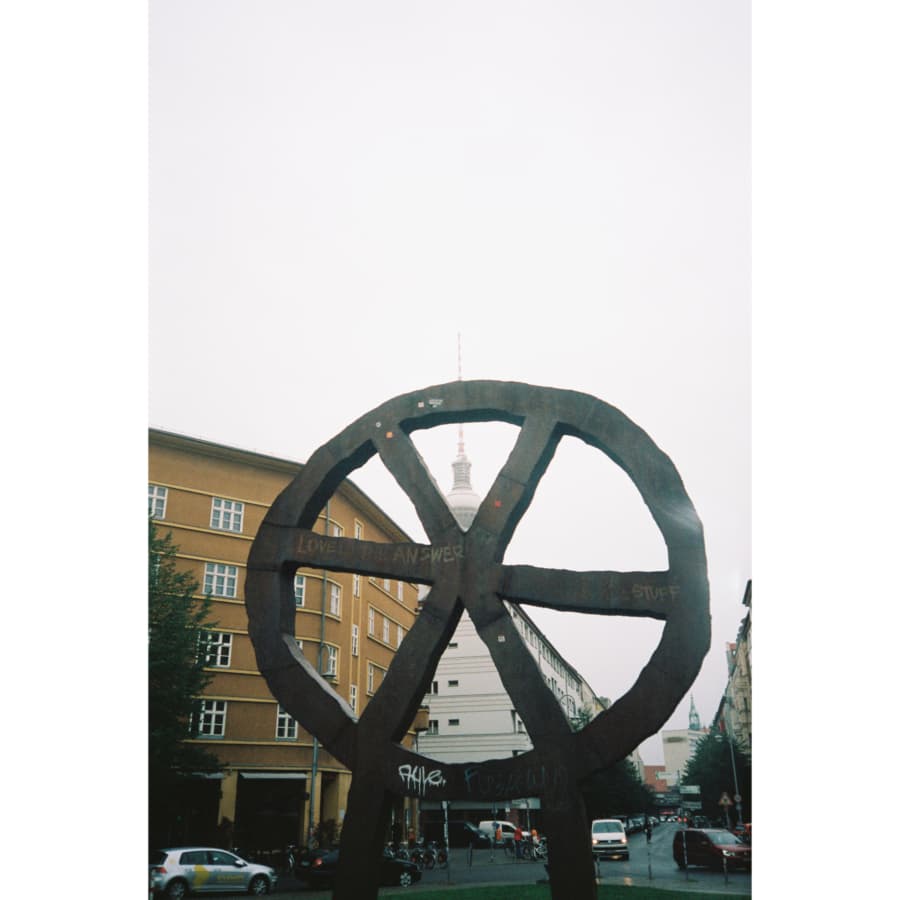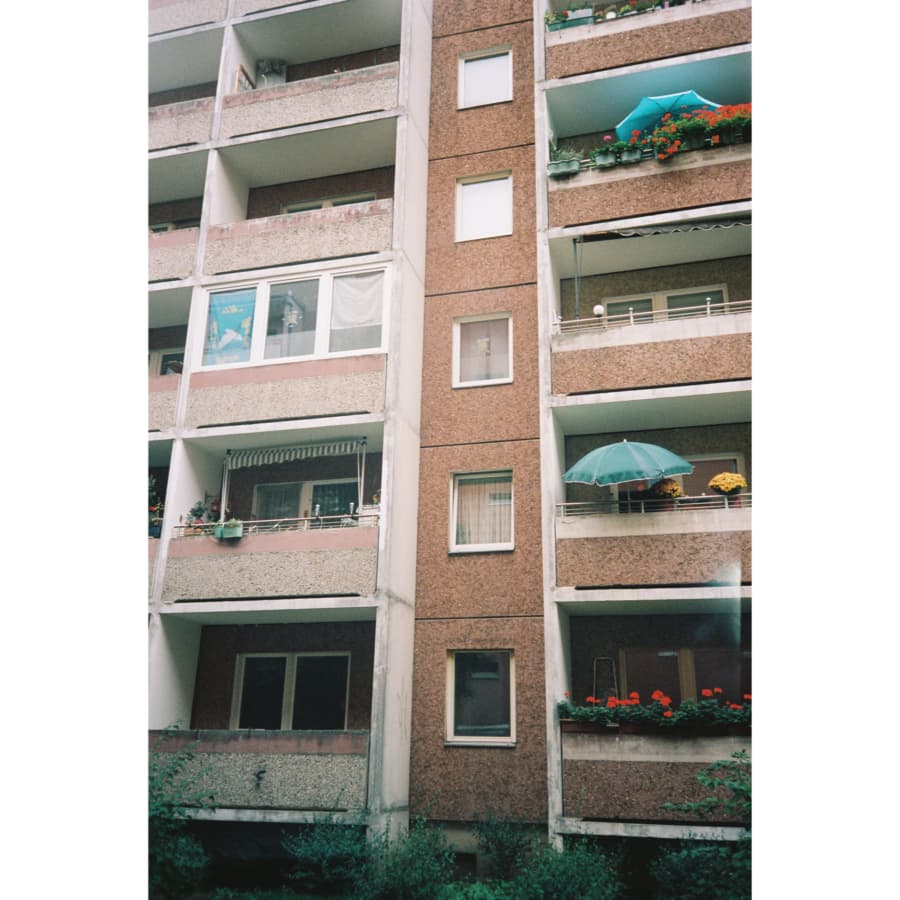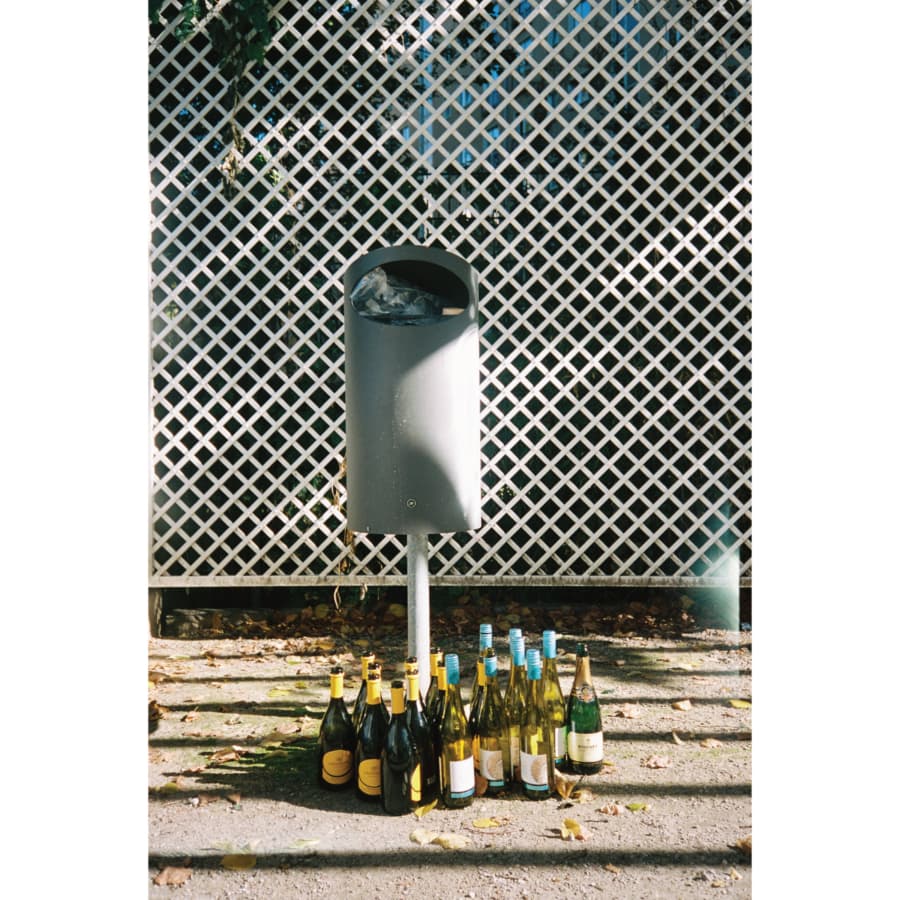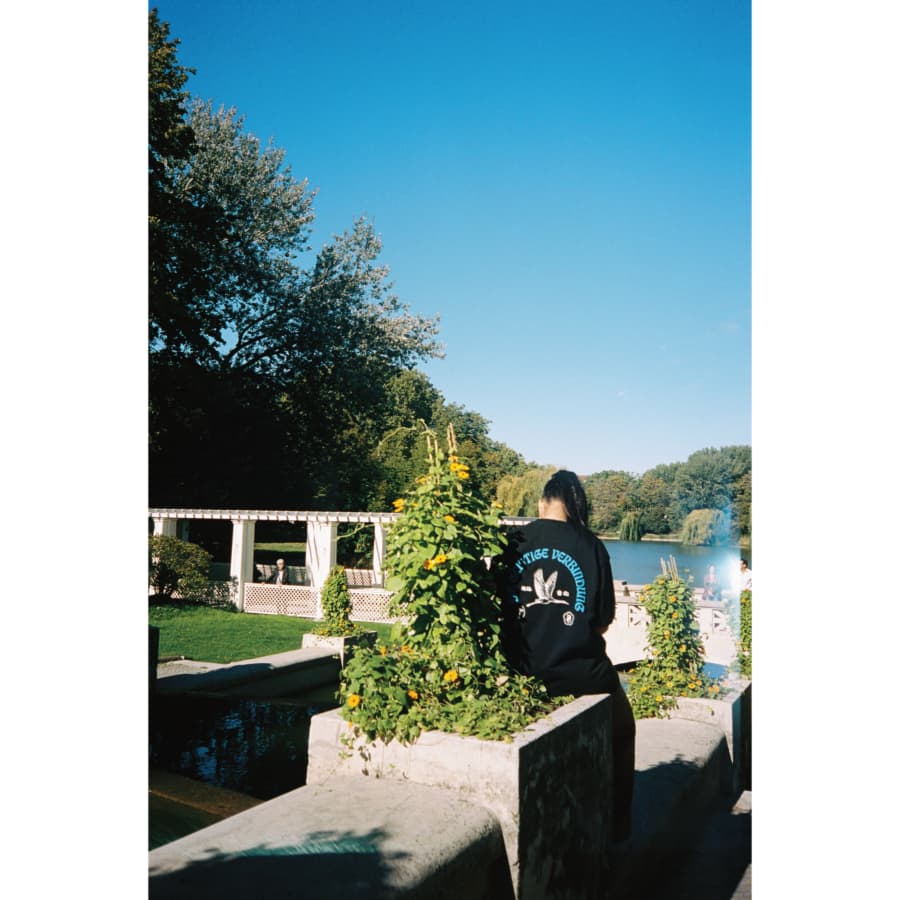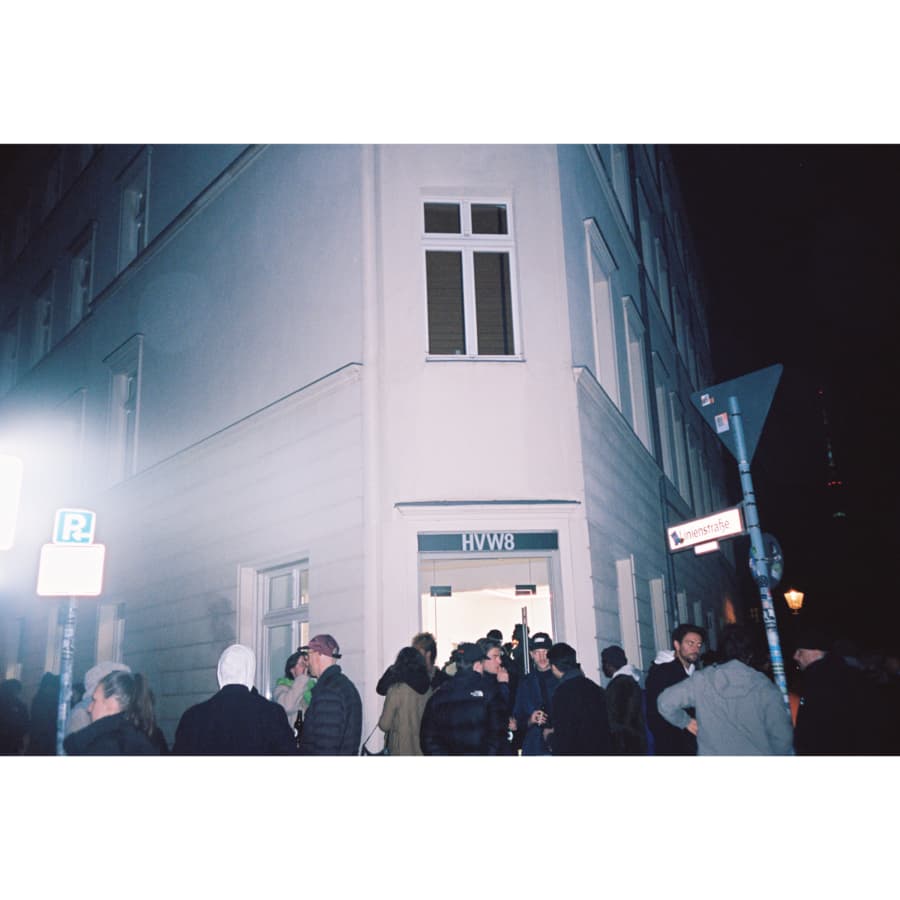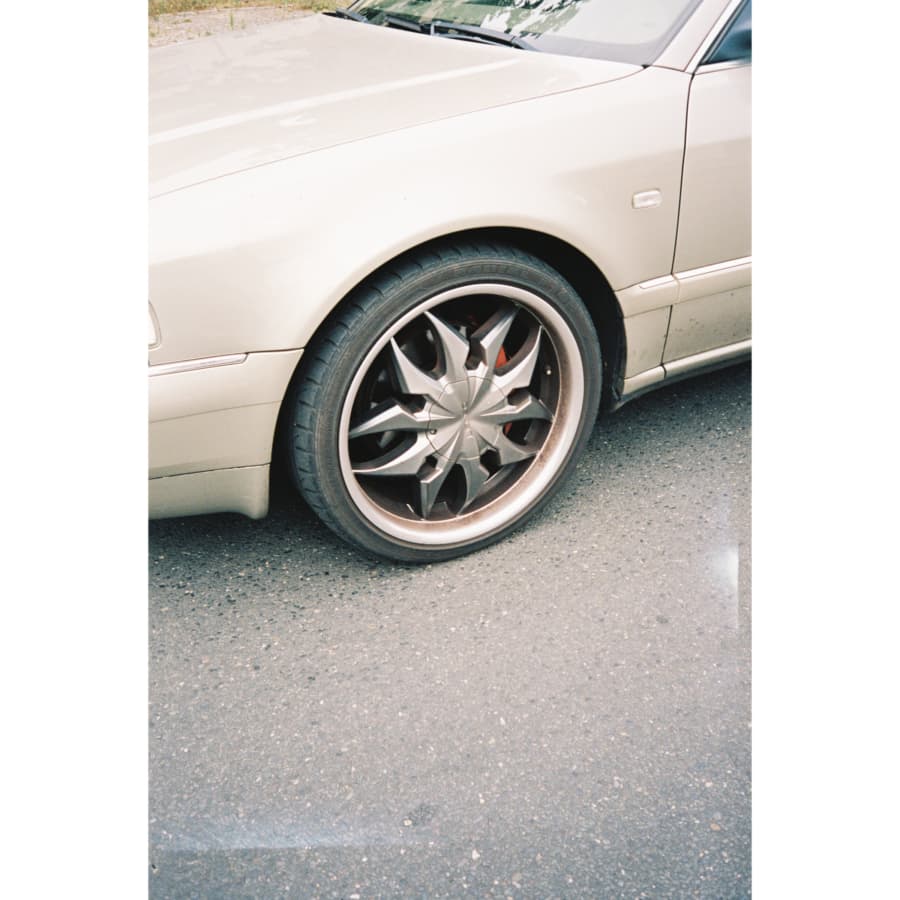Berlin's Evolution with Beinghunted.
By Beinghunted.
@beinghunted_2001Is there a location or place that you think truly sums up Berlin and Berlin culture?
Flo: Berlin is a city that has a very rich history – out of all of this, I was most fascinated with the wild tales of the Berlin club scene in the 80s & early 90s – specifically around the legendary club (which exists again btw). There’s a fantastic book that tells this story by exclusively using quotes from the key figures of this time – It’s called “the sound of the family” – this really helped me to get a hint of the dynamic back then. Personally in has been a very coining area.
Jörg: I moved from Munich to Berlin 15 years ago and found an apartment in Mitte, which used to be East Berlin. I looked at all the different areas – , , – and was slightly shocked by the state of… everything. The dirt, the grime, the run-down houses, the unkempt parks and streets. And this was more than 15 years after the fall of the wall…! Over the years, I have heard many people who visited the city say, “it’s so cool, it’s so raw, so edgy, so pure.” Maybe I expected more change, similar to New York (from the 1990s to now), but it never happened. Now I’ve grown slightly frustrated by what I myself might have found appealing in 2005 coming from a clean, rich, organized city. But, and this is the interesting aspect, if you visit parts of former West Berlin you get exactly that. It is quieter, cleaner, not as rough, anarchic, and grimy. That’s why I have decided to move to the West in 2021, too.
To give a more concrete answer, I believe that this division is still pretty unique for Berlin. And if you are trying to find me in the summer – there is a high chance you’ll find me at . With pizza, beers, etc., the sunset there really is the best spot for an inner-city summer experience.
Where were you when you realized you wanted to do what you’re currently doing, and what made you think that?
Flo: I really don’t think I’ve had this sort of revelation before. I was already in the middle of doing it – before that, I was just ruling out things left and right. I was working in adidas Trend Marketing back then, looking after two of their cross-category concept stores and No42 Paris, curating and activating the spaces through the local communities and at the same time working on the brand marketing & pr aspects of bigger adidas brand collaborations with the team in Herzo and my colleagues across the world. All in all, I realized I love looking at things holistically, and I love seeing things through and being mixed up in all of it. It’s very fulfilling to be able to steer something from beginning to end.
Now with Beinghunted. it is mostly about helping brands position themselves in this shifting consumer landscape and accompany them at every step of the process. So it’s a very rare combination of strategy / consulting work with hands-on execution – being able to see things through makes a huge difference for me – and that’s something that stuck.
Jörg: The idea for Beinghunted. as an online magazine took form between 1998 and 1999. But since it was too expensive to host a website back then it took a few years until I started my own content-management/web-design agency – with our own server – that I was able to launch it. Through my very early Beinghunted. online shop, my retail adventure began. Beinghunted. served as the main channel to bring customers to the online shop plus, and I was able to connect with brands through my network to bring them over to Germany. It was fun and exciting getting boxes sent with stuff that before I had only seen online or – very seldom – in the actual shops when I traveled.
There was a bit of a plan, yes, but it all developed organically. As retail took over – it’s really a lot of tedious work! – the agency and publishing side almost got to a full stop. I realized that I actually wanted to do what I found to be more challenging and rewarding, too. So in 2013/2014, I decided to wrap up my retail adventure and focus more on what the ‘old’ Beinghunted. was: the networking, the creative direction, the production of stories and events. We still do T-shirts, we do have a small online shop, but those are side projects that we can switch on and off as time and energy allow. It is fun and exciting to use the knowledge gathered over 25 years on projects for clients that we support in building strategies, showing the best sides of their products, and developing concepts for activations – rather than only being at the receiving end. To pick colors, sizes, quantities… and pay bills : )
We are a small team, but we share the same mindset. I believe that with the combined knowledge that we have here, we are in a unique position. It sometimes makes it quite hard to explain what we actually do. But that’s also the fun aspect of what we do, that it’s not ‘just’ one thing.
Where do you go now for inspiration or to see something unique and new?
Flo: There’s an abundance of established and independent galleries and good museums all across Berlin – favorites of mine are and . Other than that, the city is in constant flux – in a lot of districts, new restaurants and retail concepts are opening up – it’s really worth strolling your neighborhoods every once in a while. I moved to Berlin more than 10 years ago and settled in – which is still very off-beat- and I really appreciate it when people take it upon themselves to create something there.
Jörg: Apart from the museums that Flo already mentioned, I think it’s also the private collections here that are interesting and also quite a unique thing for Berlin. Since the real estate prices for commercial spaces were quite low, some big private art collections have found homes in Berlin. , , , . The as a museum was my long-time favorite, too. Their exhibition design was truly unique and exceptional.
Berlin has superb stores – books, stationery, flowers, etc. – that really make an effort to keep up with some of the world’s top retailers.
Are there any products or items you think are essential to life and culture in Berlin?
Flo: There’s a huge following for certain adidas Running styles in Berlin – this here – the ZX8000 Mita combines both – the ZX line and the early 90’s EQT models. Personally, I often rely on a constant classic that works wherever, whenever – for me, this is the Stan Smith. There are also a few very Berlin-specific items like the adidas Neighborhood Gazelle’s from 2006 – I really needed to have these. There were a few projects that always stood out to me where I was able to work with friends that are deeply connected to the sneaker and streetwear culture and have welcomed me with open arms when I first arrived here in Berlin, including the ZX500 Quote and the adidas Collectors Project – Rivalry Hi / Sneakerqueen (I don’t recall how many pairs were produced but these are crazy rare and pretty much the only hi-top sneaker that I wear regularly).
Jörg: Berlin has always been a key city for sneakers. I remember coming here in the late 1990s and seeing a lot – A LOT! – of adidas. For me, Berlin was the adidas city as much as Munich was Nike. adidas Forums, Ewings, Superstars. When I moved here, there was a slight shift towards Nike with lots of Air Max, Tuned Max, and Air Force 1s. What I’ve always liked about this city was the fact that people actually wear their sneakers—even the holiest of grails. You’d see someone casually wearing the almost non-existent (Nike Hyper Strike) Apartment Vandal. When they came out, there were many adidas Super Ape Skates – but the friends and family version. You would see the rarest Nike Dunks or any other obscure and highly valuable limited edition on peoples’ feet in clubs.
Berlin winters are quite harsh. Maybe not as cold as further up north but simply uncomfortable. Icy winds, fog, light to heavy rain showers. So I’m quite fond of having technical footwear and apparel. Anything that keeps my feet warm and the rest dry. I wouldn’t leave the house without a proper cap (currently wearing the GORE-TEX Supreme) and a shell jacket (Veilance, Stone Island Shadow, Palace).
I suggest having a proper bike, backpack, and bathing outfit always with you in the summer. There are so many options within city limits and short bike rides outside to spend summer afternoons at a lake.
After Hours
By DJ Gigola
@dj_gigolaBerlin is diverse, easy, down-to-earth and has a certain freedom to it that is quite special. I always feel that being in or is where true Berlin (in my terms) is the most present since lots of Berliners have always lived here. Within the past years, the city’s landscape has changed a lot- new bars and “Kieze” (neighbourhoods) developed and clubs as or or , or closed – clubs I grew up with and met lots of my friends at. A place that still captures the Berlin vibe is 100% Kumpelnest in Schöneberg. Hidden, eclectic and always open with an excellent playlist, the best bar team and a beautiful history still maintains to be the last resort when it comes to after hours decisions.
I think all the “secret” places above it is mostly the attitude that these people own or require – it is a certain “I don’t care, and I don’t give a fuck” that they apply towards their own decisions and how they perceive other people. For me, this feeling is very Berlin, and it makes living here extremely pleasant. You do you and nobody really cares – liebs!
DJ Gigola's Running in Berlin Playlist
Skating Berlin
@paulherrmnnI grew up skateboarding, and since a very young age, I started filming my friends. Once I got my first stuff (not even money), I thought this was the shit I want to continue doing. Knowing that you get paid for something you’d do regardless is the best thing ever. Looking up to a bunch of local heroes at the time, I just kept doing what I love. Everything else came with time. I moved to Berlin three years ago for an internship, which was still part of my high school degree. Around the same time, I got introduced to more people, and more people reached out to me to film something for them. I would pull up with my 80Euro camcorder and film everything on the same tape I used 100x. Edit everything myself and have a friend produce a track. I quickly realized that this should be my main job, so I went freelance around 1 1/2 years ago. I think Berlin is an amazing place for young people because it’s easier than most huge cities. It’s easy to get around, it’s cheap, and the shops are basically open 24/7. It’s a city you can afford to live in.
The beautiful thing about a city like Berlin is that there are so many different cultures. For me the essential place is , my local shop. All the homies hang out there, so that’s my go to.
From the Beginning of Sneaker Culture
@hikmetsugoerHow did you first get into Sneakers in Berlin?
I was born in 1973. I belong to the boomer generation, so to speak. But of course, I also experienced the beginning of sneaker culture in Berlin. There was no internet at that time, so we were limited to magazines, radio, movies, and television when it came to learning about new styles and trends. There was no 24/7 information overload like there is today. In the early 80s, we received new deliveries of culture weekly or monthly depending on TV or magazine schedule. But by the mid-80s, the first music videos and record covers started to influence my style. I remember NWA, KRS-One, Ice T, EPMD, LL Cool J, RUN DMC, Beastie Boys, and many more. We all wanted that look–the clothes and especially the shoes!
How did you get sneakers you saw on tv, in magazines, and through US hip-hop?
At the time, Berlin was divided into East and West Berlin following WWII and the Cold War. West Berlin had been divided into three zones — French, British, and Americans. So we had the influence of the Allies in Berlin. There was shopping for the soldiers and their families. For the Yanks, it was the PX. That’s where we got our first shoes – adidas Superstars, for example.
Some of us were exchange students for a year in the USA. I got a few pairs from my best friend who sent me shoes by mail. There was no Paypal yet. Money was sent in an envelope by mail. It took several weeks until it arrived. Thinking about that today, it’s unimaginable.
Do you do a lot of traveling to find sneakers?
Through the travels of friends, we found out which city in which country had cool sneakers. So we started to travel the world and hunt for sneakers. Traveling is the origin of Berlin sneaker culture and the sneaker store pioneers.
A few guys made it their profession to import shoes from the States and sell them here. These were the OGs: Ortgies, Attila, Olli, Brillski, and above everyone else, Niklas Beckert. Niklas was one of the very first to sell the imports in his own store, Mad Flavor. Niklas’s concept worked well. I was one of his regular customers at the time and later even worked in his store.
Remember, there were no international online stores yet, and the Internet was still in its infancy. But the first internet forums were not long in coming.
When did Solebox begin?
I opened the first Solebox store with my brother, Sükret, in 2002, at the Bread & Butter in Berlin. We had a concept that could compete with the international stores. It took a lot of travel, trades, and collecting imports. I worked directly with sneaker brands, and we quickly became the number one store in Germany. Solebox became quite successful over time, and other stores in Germany followed our concept. The modern sneaker store was born, and customers could get all the limited styles in Berlin and Germany.
As an OG Berliner, what are some of your most important places that embody authentic Berlin culture?
Berlin has changed constantly over the years and decades. And it’s always in upheaval. From squats, apartment bars to illegal clubs, you could do great creative things here without a lot of money. Everyone who comes to Berlin knows that the nightlife of Berlin is world-famous.
Some of the most important clubs, which shaped the Berlin Club Culture, according to my experience, are:
Dschungel, Society, Orpheo, 90 Grad, Globus, Tresor, Cookies, Pogo, 103, Rio, KitKat, Berghain and many more.
We had cool record stores like DJ Alex’s Such A Sound, and Kid Paul’s Delirium. DJs from all over the world came by here to stock up on records.
The coolest stores to shop at back then in Berlin were Ozone, Mad Flavor, California Sports, Xlarge, Downstairs, and Footlocker with their EU Exclusives. And there was a complete arcade at the Europa-Center.
Of course, Berlin has a lot to offer in terms of art and culture. But as a kid back then, Mies van der Rohe’s Neue Nationalgalerie attracted us, not only because of the exhibitions and the special architecture but also because it was one of the hip skating spots in West Berlin.
I think my restaurant recommendations would go beyond the scope here, but I have to mention Kuchi. I’ve been eating at this place on Kantstrasse for over 20 years.
What are your personal top 5 all-time sneakers, and what do you think are the top 5 sneakers all-time for Berlin?
My personal Top 5 for Berlin and of All Time:
Top 5 (Berlin):
1. Nike Son of Lava Dome (Escape Series)
2. Adidas Superstar
3. Nike Jordan IV / Flight 89
4. Adidas Rivalry
5. Adidas Concord
Top 5 (All-Time)
1. Adidas Superstar
2. Nike Air Max 87 (Air Max 1)
3. Nike Air Jordan 1
4. New Balance 1500
5. Puma Suede Classic
East + West
By David Mallon
@souvenir_officialBerlin is so full of such diverse people, and the culture is so stigmatized it has become almost impossible to find little secret spots. There really isn’t such a divide – where people who lived here for a long time go to different places, speak different slang or have many secrets. It doesn’t really matter when you come here, what you do or how old you are. You are part of the culture. No gatekeeping – that’s how Berlin works and why it’s such a fertile place for culture. Every Berliner has their own little sanctuaries where they can switch off. But that’s very personal and individual.
After Germany’s reunification, Berlin has always been a place that attracted outsiders and misfits. That’s why this city’s culture is so bustling and international and why worldwide trends emerge here. People who would never fit in a picket-fence, nine-to-five society find their place here. Here they find a community that’s very open and willing to go against the established culture. That’s how trends emerge. Berlin has the power to make the weirdest stuff the “next big thing.” If people and brands want to be at the root of the next global trend, they come here.
I really love the West German convention center . Living in the east of a Berlin that still had to adapt to the recent and abrupt reunification, I rarely saw this marble of West German architecture in person in my younger years. The spaceship-like massive building fascinated me to the point where I would spend afternoons trying to draw it from memories I made, barely seeing it from a car window. Architecture as an interesting counterpart in East Berlin is the , but rather than being an open-to-the-world convention center, it acted as a central community center. It included a bathhouse, ice-skating areas, bowling, and even a martial arts academy. We used to go bathing there a lot when I was younger. The angled glass structures always fascinated me. After the Berlin Wall fell, most of the attractions closed, and what remains is a lackluster badminton club and a lot of memories.
Tell us about the EUnify hoodie and how it came about?
St. Agnes Church, Berlin 2017. What can you do in a time of impossible elections, social division, and climate crises to activate young Europeans to become more politically active? So I designed a hoodie that reflects the feeling of uncertainty that has beset the Union after the British referendum and marks the beginning of a countermovement in search of more collaboration and unity.
Check out Souvenir Official’s DropX Exclusive EUNIFY SPECIAL Hoodie here.

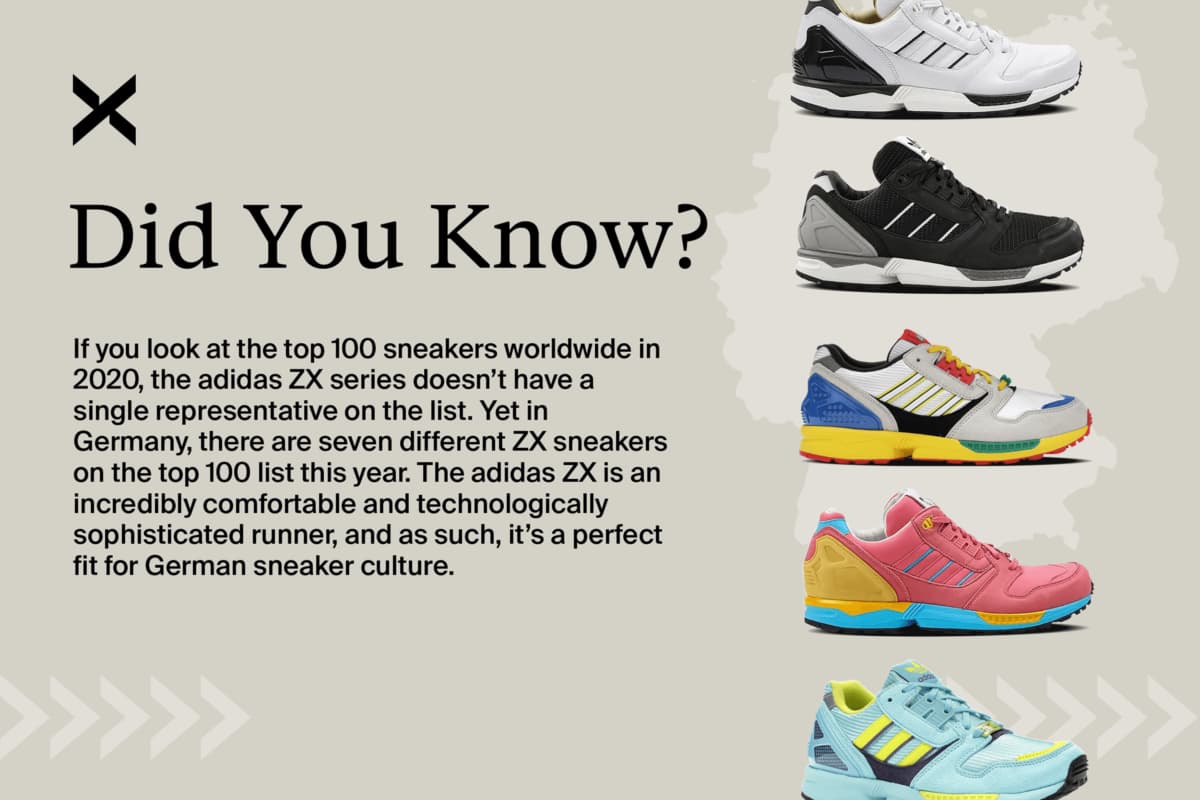

A Place To Find Your Passion
@herberthofmannIs there a location or place that you feel sums up Berlin and the city’s culture?
There are a few places that make, or made, Berlin a unique place and tell the story or communicate the vibe pretty well. I always recommend visitors to go and see the – it’s a contemporary art collection. The Nazis built the bunker as a bomb shelter, then used as a prison by Russians, and then as a storage room for tropical fruits while the Wall was standing. After that, it was a gay techno club, and now it’s home and an exhibition room for the collectors Karen and Christian Boros. It pretty much sums up the recent history and changes this city has gone through in so little time – you learn so much about the city in that building.
When it comes to shopping is still close to my heart. It was my life for 8 years before I moved on to Highsnobiety. It was my place to educate myself around buying and creative directions and also how to express and adapt to a city through product, events, and space. We understood the city very much as a place where culture and expression is more than just purchasing products and dressing up. We hosted events, concerts and readings, launched and showcased products, art, and design – and we could do so because we never had the pressure on just selling and making revenue (the rent in Berlin isn’t/wasn’t high, so it didn’t force us to maximize revenue and sell stuff that might sell but isn’t relevant). Picking a backyard location in a non-shopping neighborhood and keeping the former locksmith vibe made it hard to find and very special. I remember my mother asking, “when will we have the money to renovate the shop” because the look was far away from a classic boutique, but here again, we felt like we need to keep the space rough and approachable. We are selling beautiful products and designs, but we want people to use them and try them on. It’s meant to be worn. We wanted to have a place to showcase relevant products.
There were magical moments: opening that first delivery of Prada when we could add them to our portfolio – right next to the inline 3-pack socks of Nike we always offered – that was a dream come true and shows the new way of combining sportswear, streetwear and luxury.
I do also appreciate and respect . His space is one of the most special retail spaces I know, and his way of doing retail, which includes staying away as much as possible from the hype and sale culture, is truly inspiring.
What do you think makes Berlin so special?
The uniqueness the city brings is the laid back attitude. Berlin still doesn’t give you the feeling that you have to dress up or look a certain way to enter a club, go to a restaurant or museum. Come as you are, be a nice and open-minded person. Berlin feels like a fetish city all over – leather, lycra, latex, or sportsgear – many fetishized products are seen in high frequency during the day. Our old major said: Berlin is poor, but sexy. I think that still fits these days.
Second-hand shopping combined with investing in a new piece now and then, which you value for a long time (or lifetime), is still a thing for many Berlin residents. But you won’t see many people in head-to-toe designer looks.
Berlin being an affordable capital in Europe attracts many creatives, designers, artists, musicians, chefs, craftsmen, and makers. It’s still a place to find your passion, I think. You feel it in many corners of the city – there are even mega nerdy shops like where you can find thousands of materials and samples for your workshop. It’s a wonderland to get inspired, and you meet world-famous artists buying their paint there next to tinkering grannies. I love that.
I also feel that the scenes are still small enough that artists, photographers, fashion designers, and musicians mix really well – there aren’t such segregated scenes.
Highsnobiety is a global platform based in Berlin. What do you think is the global influence of Berlin and Berliner culture, or the relationship between Berlin and other major cities like either through the Highsnobiety platform and reach or in general?
Berlin as a city radiates freedom, alternative, and open-minded spirits, and the appreciation of the arts for centuries. Music, design, architecture, and history (visible on every corner) shape Berliners’ moods and actions. The affordable living standard brings creative people from all over the world here – it still seems like the place where you can fulfill your dreams. David Bowie said in the 70s, while he lived here, “Berlin, the greatest cultural extravaganza that one could imagine.” Or Franz von Suppé, an Austrian composer who apparently said around 1800, “You are crazy, my child. You must go to Berlin.” This feels a bit like what my mother said when I told her that I wanted to move from our picturesque little mountain town in Austria to Germany’s capital. Anyways, I feel like the easy-going way of living, and the ease in terms of the cost of living make Berlin such a gem and inspiration for visitors. The mix of our Berlin HQ with our second biggest office in New York City makes a great combination to find a balance between the two vibes.
What are items you think are essentially Berlin or uniquely influential in the city’s culture and why?
I would start this list with my number one item: a comfortable shoe or sneaker. Berlin is best to discover by walking in the neighborhoods, so make yourself comfortable. Furthermore, most pedestrian streets, parks, and paths are pretty rough—no real place for too chic shoes or high heels. When I’m traveling, I always forget that certain restaurants or clubs in other cities require chic shoes and clothing – which won’t happen in Berlin.
You better have a thick winter jacket in the winters – it gets really cold and windy here. Many people love to have a pair of sunglasses in their pockets when they don’t want to show their eyes after clubbing for 48 hours and more. Same for some sports shorts: you wear them under your pants and take the jeans off in the club. I guess a fanny bag would also fall into this category of Berlin nightlife lovers – you fit everything you need in there for a few nights and days of partying.
My Essential Places & Things
By Kane Holz
@kaneI am actually a huge fan of the for some reason. There’s very good and affordable food such as , always something crazy going on, it’s dirty & there is , one of the best photo labs in Germany. Food-wise the in the west of Berlin is my favorite street because of all the genuine Asian food spots. At night is my favorite when it comes to good drinks & snacks in a bar. Even though it sounds corny is the best spot to learn about Berlin diverse culture. I met some creative geniuses there back when I went.
I can not live without my AirMax TN/Plus, or whatever you want to call them. They describe the youth of Berlin just as good as my youth growing up in Hamburg. One of my favorites is actually a pretty new release from 2019 (BV1983-001). They are falling apart already, though. I also do not want to live without my Mission Workshop & Yoshida Kaban Porter bags ever again. I hope they all last me for a lifetime. When it comes to homeware, I hope my Neighborhood Booze Radio Incense Chamber (NBHD-BORICBK) will never break.
Berliner Secrets
By Nikki Powell
@nikki_powell_The events of 2020 really changed a lot of the ways in which we can go and discover things in Berlin: going out and listening to music in a club setting was always inspiring for me. I miss bass, haha. Nowadays it’s still great to go to exhibitions or galleries to see something new; there’s so many good ones but some of my favourites are in Schöneberg, in Grunewald, and at Wannsee. Also, just taking a walk between districts and finding some surprises along the way is always pretty inspiring.
The first secret thing people born in Berlin know is how long you have to have lived in Berlin to be able to call yourself a Berliner. I’ve lived here 11 years, and maybe I’m one now? Yeah, probably not. And the second: the best chili wonton spot is (contradictory to popular belief) not , but a different spot in Wilmersdorf – .
Although Berlin has a long history in film, and super established events like the Berlinale take place here, I think what’s most interesting in the film scene at the moment are the young production companies or collectives which are breaking through into the established systems: for example, Jünglinge, a collective that’s developing a new style of German cinema, self-described as queer, diverse and arising amidst the cultural climate of “post-migrant” Germany. Berlin’s diversity has often been quite focused on spaces created within nightlife or art institutions – which is obviously massively important and a huge part of why Berlin is so special.
€1.95 Pizza
By Olive Duran
@oliveduranI’ve been in Berlin for almost ten years, and during that time, I’ve moved around – A LOT. However, I always felt most at home in Kreuzberg and Neukoelln; those are also the areas I got to know and connect with best. I’ve spent many years in the , which is now one of Berlin’s most highly demanded neighborhoods; there was a place called “€1.95 Pizza” owned by Gorkan, who took over the business from his family at the age of 20. I basically lived there; it was the hole in the wall spot with great pizza and loud EDM playing. Almost ten years later it’s now called “” and you won’t find anything under €5.00 – of course it’s still cheap, but it will never compare to €1.95 Pizza, I guess that’s gentrification for you. I do admire that even with the significant gentrification in Kreuzberg and Neukoelln, you can still feel the neighborhood’s rich Arabic and Turkish culture, a major part of Berlin. For example, the iconic , which to the exception of a few hip coffee spots, it pretty much hasn’t changed.
Where do you go for inspiration?
Ooooh, I’d never be able to pick one specific place. The whole city gives me inspiration for real. The West has been relatively new for me to explore; it’s a whole other world to what I’ve been confronted with during most of my time in Berlin. There’s a very upscale and boujee feeling when you’re walking the streets around ; it’s so lovely. You can walk down one street and it’ll be super quiet, and you’ll only see old rich Germans, and the next street will be filled with AMAZING Asian restaurants, renowned galleries, and museums. However, if I had to narrow it down, I’d say it’s the people and the music in Berlin that inspires me the most. The feeling of opportunity mixed with curiosity is fascinating to me. I feel overwhelmed with all the incredible people I got to meet here over the past years.
Hard but Heartfelt
By Nico Adomako
@nicoadomakoLocal slang-wise, shortening a name and adding an “I” is pretty common, especially subway stops like Rosi, Kutschi, Nolli, etc. Be it slang from “haram” to the super-dope graffiti crews, to this general very political and critical culture: Berliners have this attitude that they live 100%, but it’s hard to squeeze that into one specific example. It’s a bit like New Yorkers. A lot of tourists are surprised by how rude people seem, but it’s not that. It’s more a “hard but heartfelt” thing. They’re very straightforward, no-nonsense. The city speaks for itself. Another thing really Berlin-specific is the absence of brands. At least, that’s what people tend to think. But since music is such a big thing, many labels and collectives also do clothes. They don’t really care about the fashion world so much, but there’s a lot of good stuff happening. I mean, there’s a lot of slang that is really Berlin-specific. Also, there are many Berlin foods, drinks, etc., that I feel like a lot of expats are not even aware of they exist. For example, Futschi.
I actually think Berlin is very underrated despite the hype. I have been living in the city for 8 years and experienced so many things, but I still find new places or things around here that are totally new. Most people focus on a handful of clubs, a few neighborhoods, restaurants that look like anything in any big city these days – which is also cool! But there’s basically an entire world on top of it. I mean, the city used to be two separate countries, where do you find that? Berlin is definitely under-recognized for its cultural clout. People say it’s over or irrelevant because the city is notoriously broke, not fashion enough, and has a lot of social issues – but then they put on their all-black clothes, go to whatever industrial techno party in their city, spend $10 on a Mate (which is 95 cents here) and say shit like “this is sooo Berlin.” And I am talking about places from LA to Singapore here. Or think about all the German-named artists, clubs, parties popping up. Where does that come from?
Check out some of Nico’s photos below:

